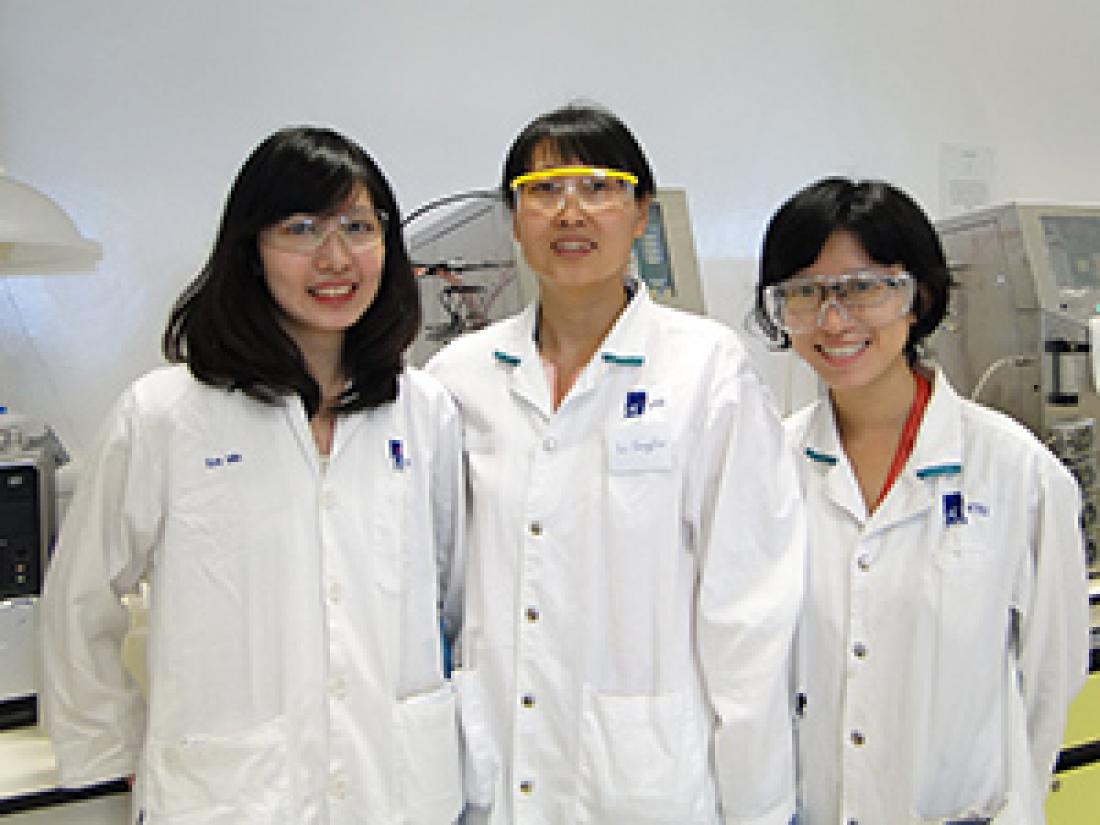Jin Chuan Wu’s research group at the Division of Industrial Biotechnology, A*STAR Institute of Chemical and Engineering Sciences. © 2015 A*STAR Institute of Chemical and Engineering Sciences
Leftover plant matter from the production of palm oil could provide a generous source for making biofuels and environmentally friendly plastics. Researchers from A*STAR have developed a fungal culture for use in a cheap and efficient method to transform the waste oil palm material into useful products.
The palm oil industry is big business in South Asia, but after harvesting the fruit from the oil palm trees, large amounts of leftover biomass known as empty fruit bunch remain. The industry wants to use these leftover fruit bunches to produce bioethanol and biodegradable plastic, but has stumbled in their efforts to convert the leftovers in a cost-efficient way.
“Our research makes it possible to produce fermentable sugars from this huge amount of waste in a cost-effective way to increase its commercial value,” says one of the lead researchers, Jin Chuan Wu, from the A*STAR Institute of Chemical and Engineering Sciences.
The palm oil waste contains carbohydrate material, known as cellulose and hemicellulose that can be broken down into sugars for use in fuel and plastic production. While the hemicellulose material is easily dissolved by a process known as dilute acid-catalyzed hydrolysis, the cellulose is tougher and remains solid.
The cellulose can be further treated with a mixture of enzymes, but the commercially available mixtures usually do not contain enough of one enzyme — β-glucosidase — to do the job properly. Higher amounts of β-glucosidase can be added to the commercial preparations, which then ramps up the cost of converting oil palm biomass into biofuel and bioplastic.
Wu and his team used whole fungal cell cultures to catalyze the breakdown of cellulose instead of the commercial enzyme mixture. They employed a strain of Trichoderma reesei, which produces sufficient amounts of the enzymes necessary to dissolve cellulose.
The research team was pleased with their results, says Wu. The fungal cell cultures converted the cellulose to glucose and achieved a concentration of 8.5 grams per liter after 120 hours — almost 59 per cent of the total potential glucose available in the plant material. In comparison, the commercial enzyme mixture produced 10 per cent less glucose under the same conditions.
In total, the team were able to convert up to 82 per cent of the original plant carbohydrates into fermentable sugars.
“The use of whole fungal cell culture for the hydrolysis of cellulose makes it more commercially attractive as there is no need to add external β-glucosidase or separate the whole fungal cells from the cellulases,” explains Wu.
The A*STAR-affiliated researchers contributing to this research are from the Institute of Chemical and Engineering Sciences
Reference
Li, Q., Ng, W. T., Puah, S. M., Bhaskar, R. V., Soh, L. S. et al. Efficient production of fermentable sugars from oil palm empty fruit bunch by combined use of acid and whole cell culture–catalyzed hydrolyses. Biotechnology and Applied Biochemistry 61, 426–431 (2014).



